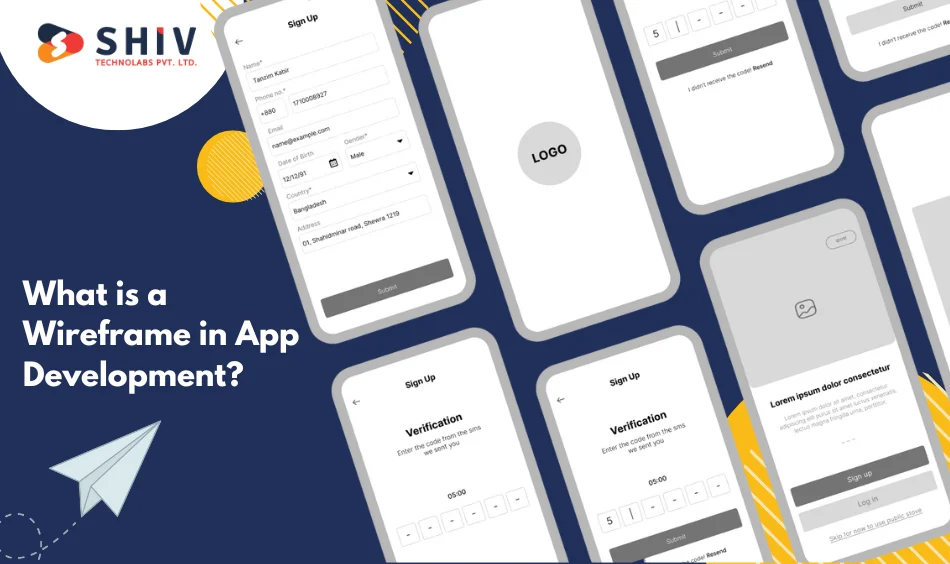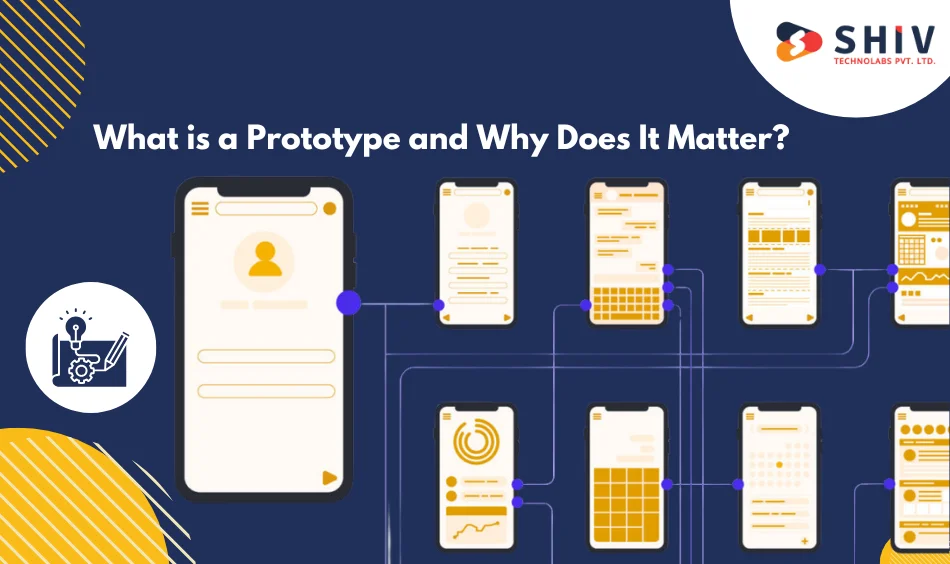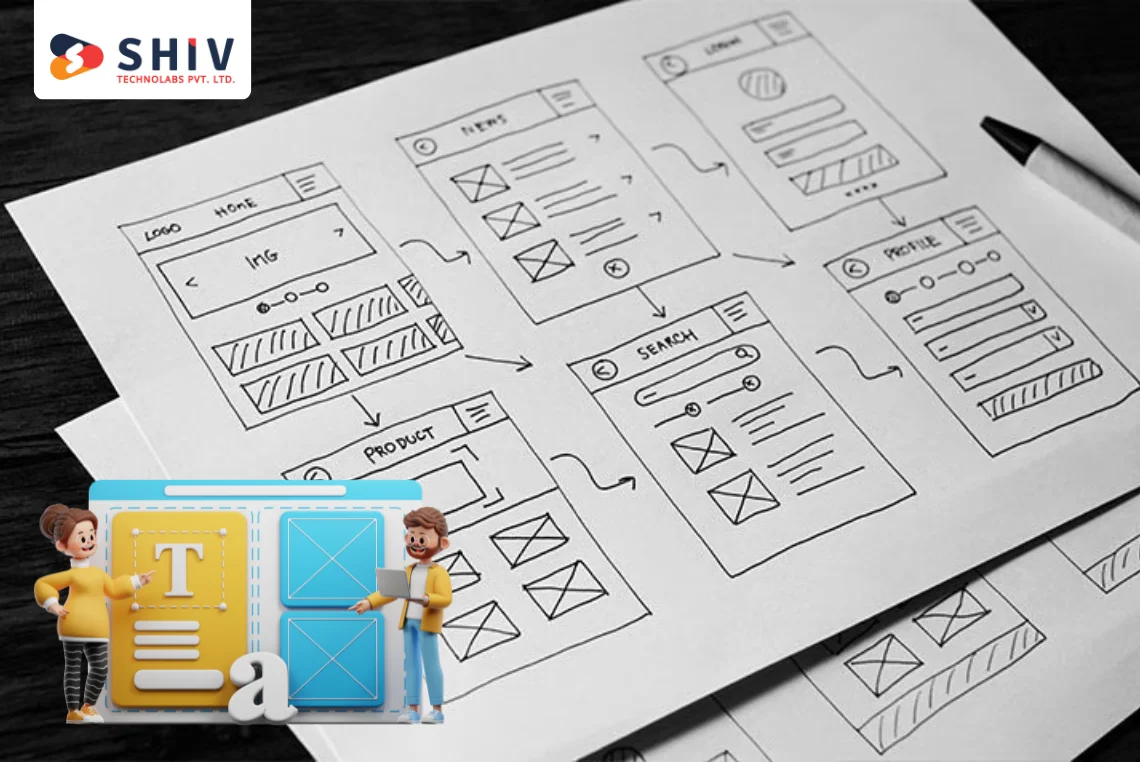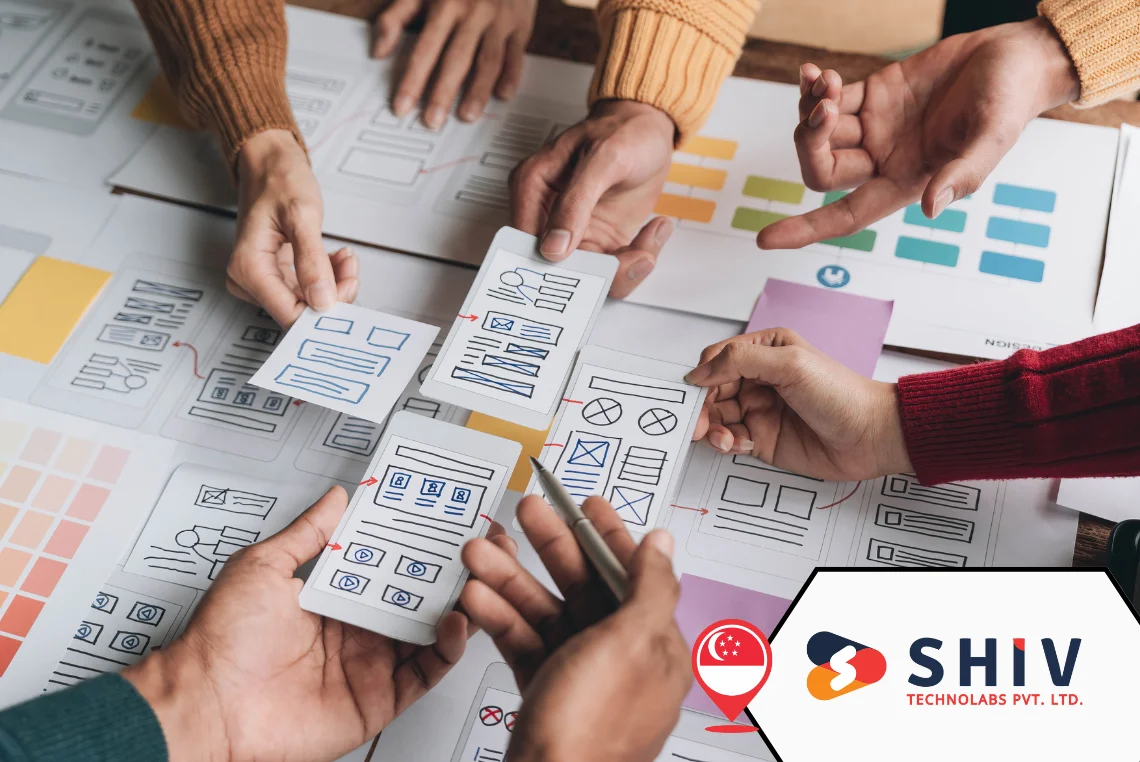Table of Contents
Strong visual planning sets the tone for a successful app from the first sketch to launch day. With expert wireframe design services, teams map screens, user paths, and system states before any coding begins.
Wireframes define structure, key actions, and the order of tasks across every screen in the product. Prototypes add taps, transitions, and feedback, so reviewers experience the flow instead of guessing from static slides.
Both steps cut risk early, when changes cost less and schedules feel tight for growing product teams. They also create a shared plan that designers, developers, and stakeholders can read the same way, without mixed interpretations.
Wireframe for mobile applications matters even more because space is limited and gestures carry core actions. Early frames reveal thumb reach issues, crowded toolbars, and confusing tab names before design polish hides real problems.
In short, sketch the structure with wireframes, then test the journey with a clickable prototype. This sequence speeds reviews, reduces rework, and supports accurate estimates, so development starts with clear direction and fewer surprises.
What is a Wireframe in App Development?

It is a plain visual layout that maps structure, navigation, and basic content on each screen. It shows sections, priority, and core actions without colors, fonts, or images, so the team focuses on function. This shared view aligns scope early and sets a clear plan before UI polish or code.
A wireframe outlines key screens and the paths between them while keeping attention on clarity and task flow. A wireframe for mobile applications makes validation simple because it tests thumb reach, spacing, and tap targets at the earliest stage. If you ask how to create a wireframe for an app, start with goals and content, then link each action to a clean, readable screen state.
Include List
- Key components of a wireframe: layout grid, buttons and input fields, navigation flow between screens, and content hierarchy.
- Common wireframing tools: Figma for fast collaboration, Balsamiq for quick sketching, Adobe XD for structured flows, and Sketch for Mac-based teams.
How to Create a Wireframe for an App?
Start with clear goals and a brief problem statement that every stakeholder understands the same way. List primary users, core tasks, and success criteria, then draft the must-have screens and states. Review competitor flows to spot patterns, gaps, and common friction points worth testing early in sketches.
Sketch low-fidelity frames on paper or whiteboards to answer how to create a wireframe for an app. Move to Figma or Balsamiq, define grid, spacing, and basic controls, then link screens for flow. For a wireframe for mobile applications, check thumb reach, tap targets, and empty states on common devices.
Validate structure with five to seven users, asking them to attempt key tasks while thinking out loud. Record issues, fix wording, adjust hierarchy, and cut extras that distract from the main task.
This short plan keeps work focused and makes feedback faster across product, design, and engineering. When stakeholders sign off on the final wireframe, UI design starts with fewer unknowns and tighter scope.
| Step | Process | Outcome |
|---|---|---|
| Step 1 | Identify target audience and purpose | User needs defined |
| Step 2 | Sketch layout ideas | Initial structure ready |
| Step 3 | Create digital wireframe | Clear visual flow |
| Step 4 | Review and refine | Final wireframe for approval |
What is a Prototype and Why Does It Matter?

A prototype is a clickable model that clearly shows how users move through tasks and screens. When teams ask what a prototype is, think of a test drive without production code or engineering builds. It answers practical questions early, using realistic flows, timing, and messages before budgets lock in and stakeholder concerns settle.
Prototypes turn static screens into interactive journeys you can click, measure, and judge within real-looking states. Teams run quick tests, collect issues, and fix wording or layout before the artwork and engineering ramp. This cycle produces sharper feedback, cleaner decisions, and faster approvals during planning and stakeholder reviews and sign-offs.
Choose low-fidelity prototypes for early concept checks, or high-fidelity versions for near-final motion, polish, and copy. Low-fidelity keeps focus on flow, wording, and structure, without distracting colors, icons, or typography choices. High-fidelity checks timing, transitions, microcopy, and screen states that affect real behavior and task success.
In the wireframe vs prototype discussion, prototypes answer how it feels, not just how it looks. Connect prototypes to your design system, so sizes, states, and patterns match later development work and accessibility needs. That link reduces guesswork, supports clear estimates, and keeps the schedule steady from kickoff to release for everyone.
Wireframe vs Prototype, Importance, and Next Steps
Wireframe vs Prototype: What’s the Difference?
The wireframe vs prototype comparison is simple: wireframes plan structure, while prototypes test interaction. Use both to answer “what will we build” and “how will it feel” before code.
| Aspect | Wireframe | Prototype |
|---|---|---|
| Purpose | Structure and layout | Interaction and flow |
| Detail Level | Low-fidelity | Medium to high |
| Focus | Content placement | User experience |
| Output Type | Static images | Clickable demo |
Why is Wireframing Important in App Development?
Wireframing reduces misunderstandings and prevents avoidable rework. It clarifies the scope for teams and sets a cleaner path to build.
- Saves development time and cost.
- Aligns goals with user expectations.
- Improves communication between stakeholders.
This directly answers why wireframing is important in app development for product teams.
What Comes First: Wireframe or Prototype?
Start with the frame, then add interactions. In short, what comes first, wireframe or prototype, is wireframe, followed by a prototype for testing.
Professional Wireframe Design Support
Need speed and clarity? Our wireframe design services map flows, clicks, and states you can test before code.
- Mobile and web wireframes
- High-fidelity clickable prototypes
- UX flow mapping and user testing
Conclusion
Wireframes and prototypes lay a clear path from idea to build and reduce costly surprises. Partner with a trusted wireframe design services company to move from planning to development with confidence.








![Web Design Hacks Used by Billion-Dollar Brands [How You Can Use Them Too!]](https://shivlab.com/wp-content/uploads/2025/03/Web-Design-Hacks-Used-by-Billion-Dollar-Brands-How-You-Can-Use-Them-Too.webp)













